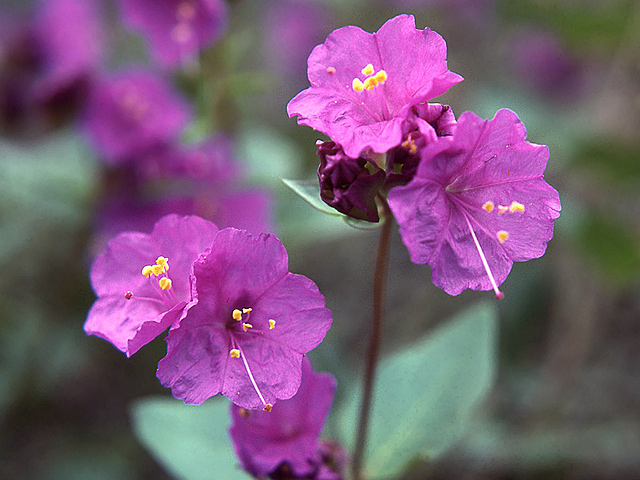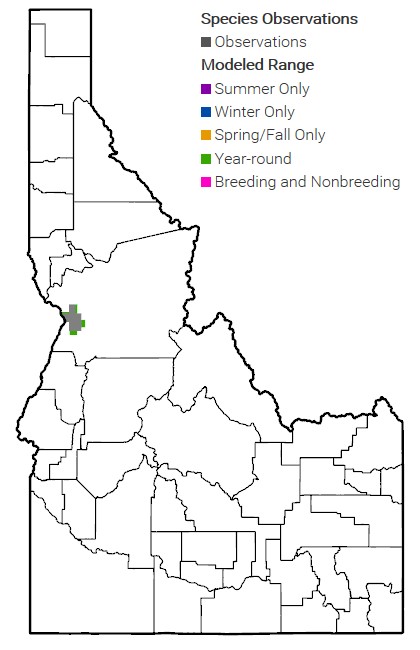ESA Status: Threatened
MacFarlane’s four-o’clock (Mirabilis macfarlanei) is a magenta flowering perennial plant endemic to Idaho and Oregon. It prefers warm, dry, and steep river canyon grasslands with ten of the thirteen known populations located in the Snake River and Salmon River areas of Idaho. Limited monitoring has showed that individual plants can live to well over 20 years.
MacFarlane’s four-o’clock was originally listed as Endangered on the Endangered Species Act (ESA) in 1979. Resulting from ongoing recovery efforts and the discovery of new populations, MacFarlane’s four-o’clock was downlisted to Threatened in 1996. Five-Year Status Reviews indicate that the population is stable, but despite increased annual survey efforts, no new populations have been discovered. The most recent Five-Year Status Review was completed in 2015 and a new one was initiated in 2020.
The main threat to MacFarlane’s four-o’clock continues to be invasive nonnative plant species like cheatgrass, yellow starthistle, dalmation toadflax, and rush skeletonweed. The exotic species compete with MacFarlane’s four-o’clock for space, light, water, and nutrients, and the presence of cheatgrass can drastically increase the frequency and intensity of wildfires. While the 2015 Five-Year Status Review states that MacFarlane’s four-o’clock is not in immediate threat of extinction, it also emphasizes that populations are not secure from habitat degradation threats caused by invasive nonnative species and increase of wildfires.
Staff Contact
More Information:
Species Profile for MacFarlane’s four-o’clock – U.S. Fish & Wildlife Service

licensed under CC BY-NC-ND 2.0

Map Credit: Idaho Department of Fish and Game
 Official Government Website
Official Government Website